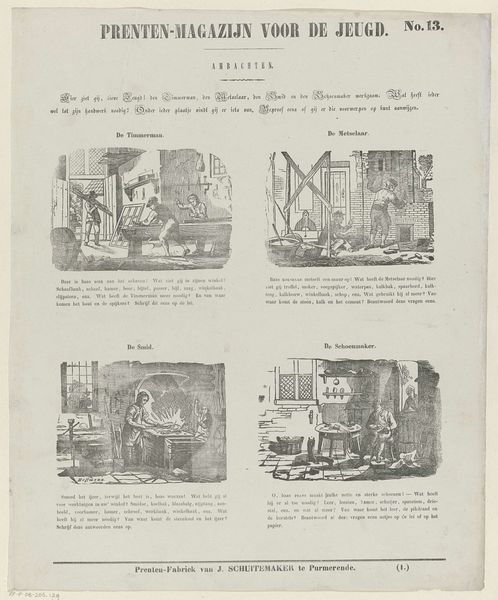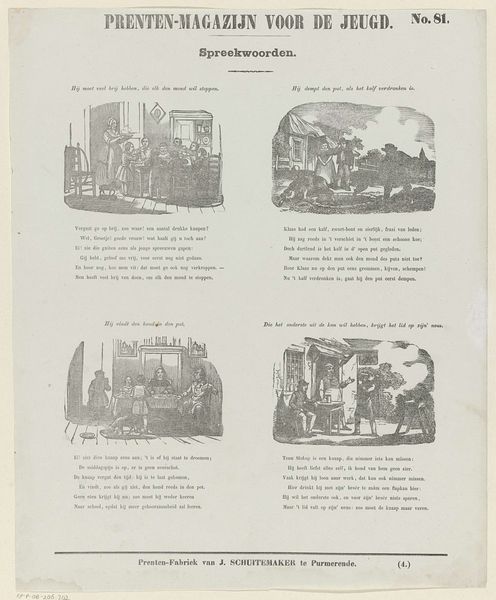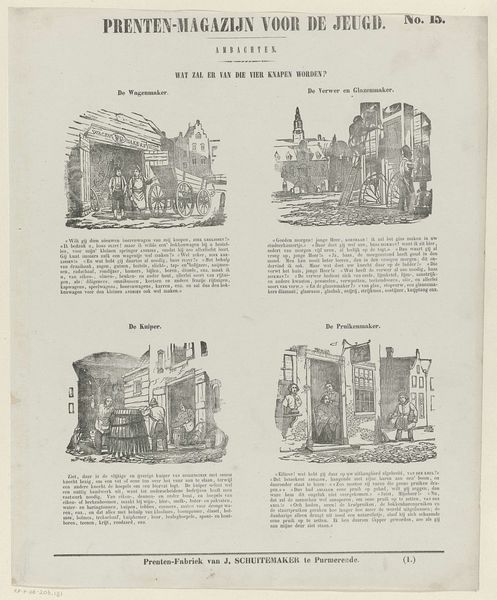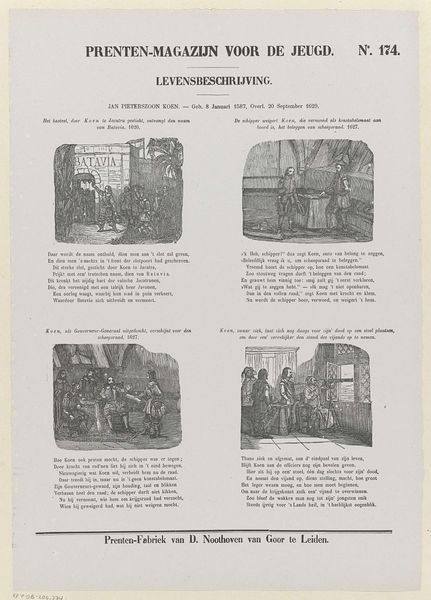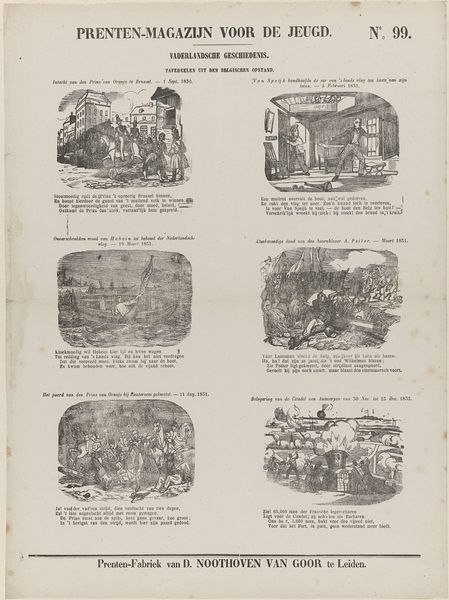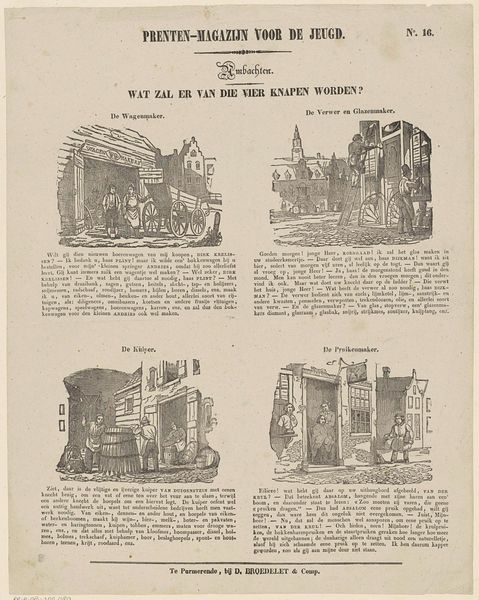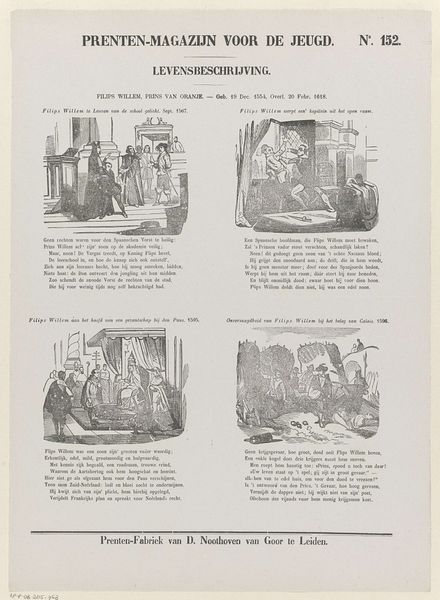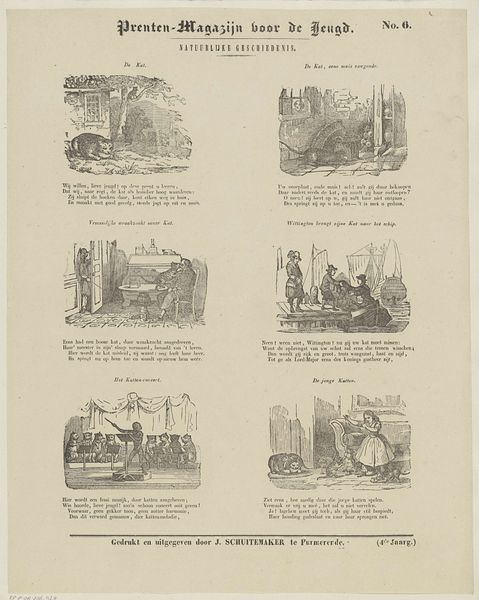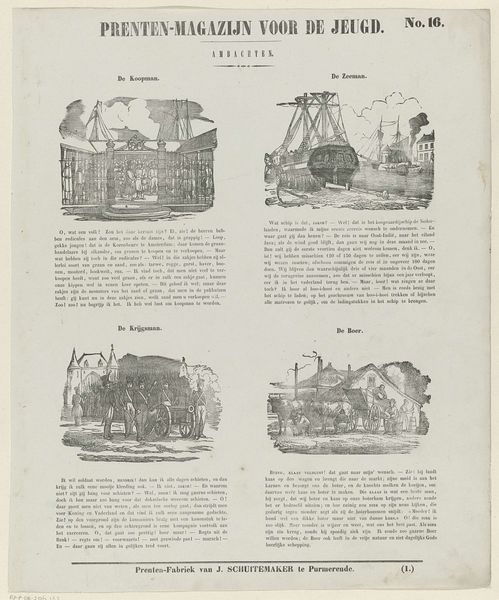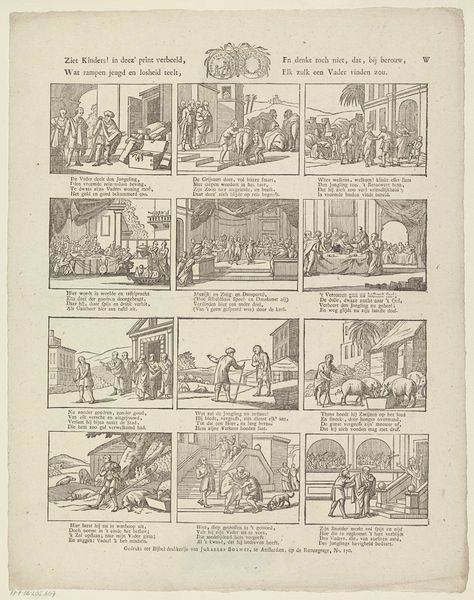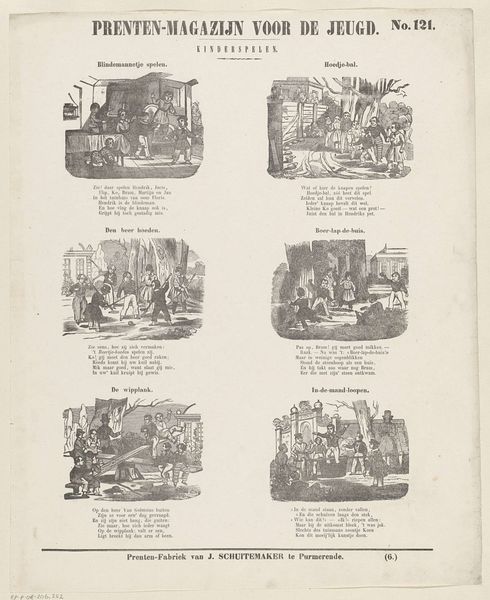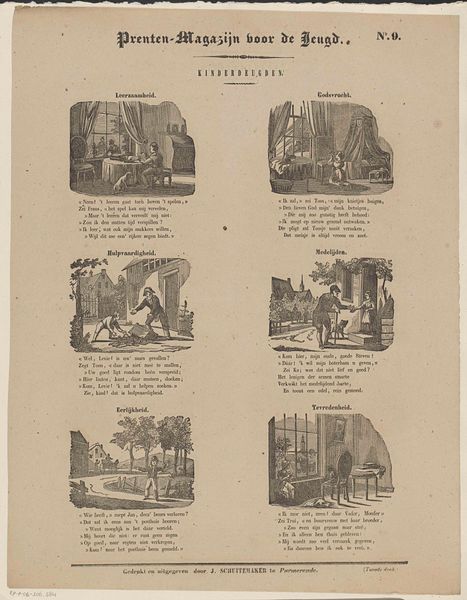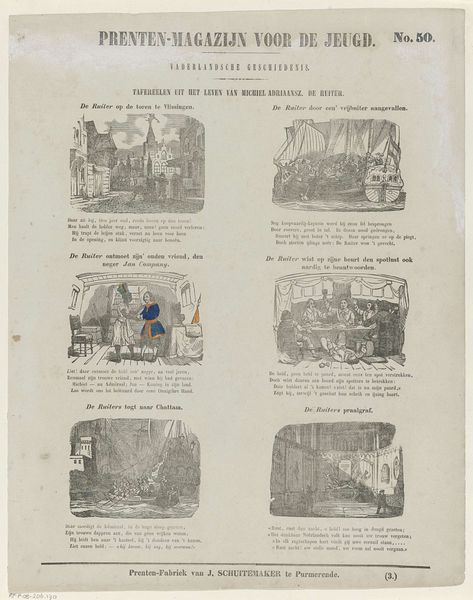![Hier ziet gij, lieve jeugd! den timmerman, den metselaar, den smid en den schoenmaker werkzaam. Wat heeft ieder wel tot zijn handwerk noodig? [(...)] by Antoine Franciscus Cornelis Hoffmann](/_next/image?url=https%3A%2F%2Fd2w8kbdekdi1gv.cloudfront.net%2FeyJidWNrZXQiOiAiYXJ0ZXJhLWltYWdlcy1idWNrZXQiLCAia2V5IjogImFydHdvcmtzL2U2YzA0NGQzLTIxNzktNGYxZS1hZmE3LTRjZTk4ODQ4NmNjMS9lNmMwNDRkMy0yMTc5LTRmMWUtYWZhNy00Y2U5ODg0ODZjYzFfZnVsbC5qcGciLCAiZWRpdHMiOiB7InJlc2l6ZSI6IHsid2lkdGgiOiAxOTIwLCAiaGVpZ2h0IjogMTkyMCwgImZpdCI6ICJpbnNpZGUifX19&w=3840&q=75)
Hier ziet gij, lieve jeugd! den timmerman, den metselaar, den smid en den schoenmaker werkzaam. Wat heeft ieder wel tot zijn handwerk noodig? [(...)] 1839 - 1841
0:00
0:00
antoinefranciscuscornelishoffmann
Rijksmuseum
print, engraving
# print
#
romanticism
#
genre-painting
#
engraving
Dimensions: height 422 mm, width 334 mm
Copyright: Rijks Museum: Open Domain
Editor: This is a print called "Hier ziet gij, lieve jeugd! den timmerman, den metselaar, den smid en den schoenmaker werkzaam" from sometime between 1839 and 1841, by Antoine Franciscus Cornelis Hoffmann. It shows four little scenes of different craftsmen at work, and has a kind of quiz beneath each one. It has an old-fashioned feel to it – like a page from a children’s primer. What stands out to you about the imagery here? Curator: I am struck by how this image anchors cultural memory. Consider the presentation of labor; each craftsman—carpenter, mason, blacksmith, shoemaker—is shown with their tools, almost like a visual lexicon of 19th-century trades. These are archetypes of industry, deeply embedded in the collective understanding of how society functions. What emotions are conjured by the display? Editor: It seems to be emphasizing self-sufficiency, and almost an admiration for those who could make a life with their own hands. I hadn’t thought about it evoking cultural memory – I was really drawn to the old-fashioned aesthetic. Curator: Indeed, the aesthetic choices—the stark lines of the engraving, the almost instructional layout—point to a cultural belief in the value of craftsmanship, but the key here is the circulation of this belief through the medium of print. What would that process of circulation symbolize for the young people viewing this in the 1840s? Editor: The images probably validated the traditional class structure for kids who grew up in these trades, but it may have also planted new possibilities of how to make a living in children from other backgrounds. Curator: Precisely. It’s a cultural artifact doing double duty. Reinforcing norms and subtly seeding new imaginaries through symbolic representation. Editor: I see that now. Thanks for helping me recognize how loaded images can be with cultural meaning and aspirations.
Comments
No comments
Be the first to comment and join the conversation on the ultimate creative platform.
